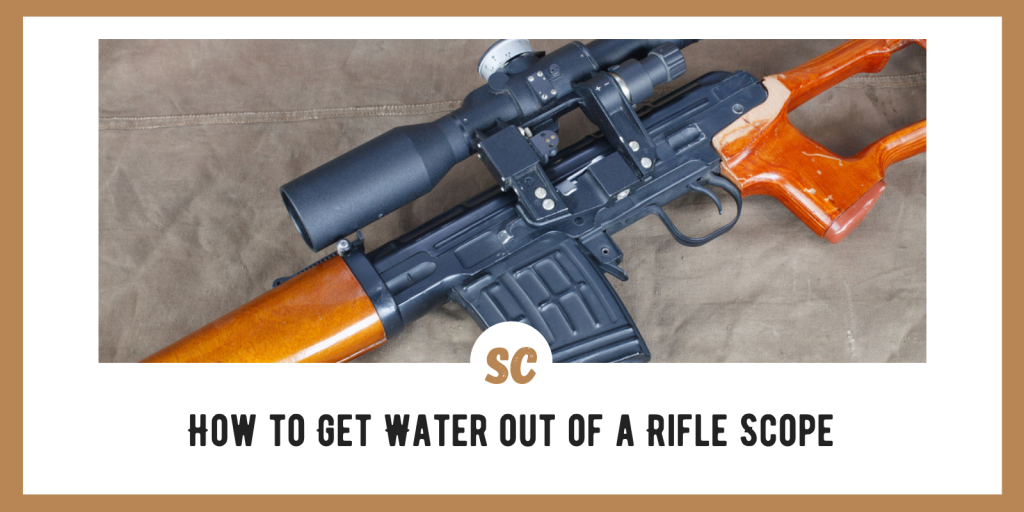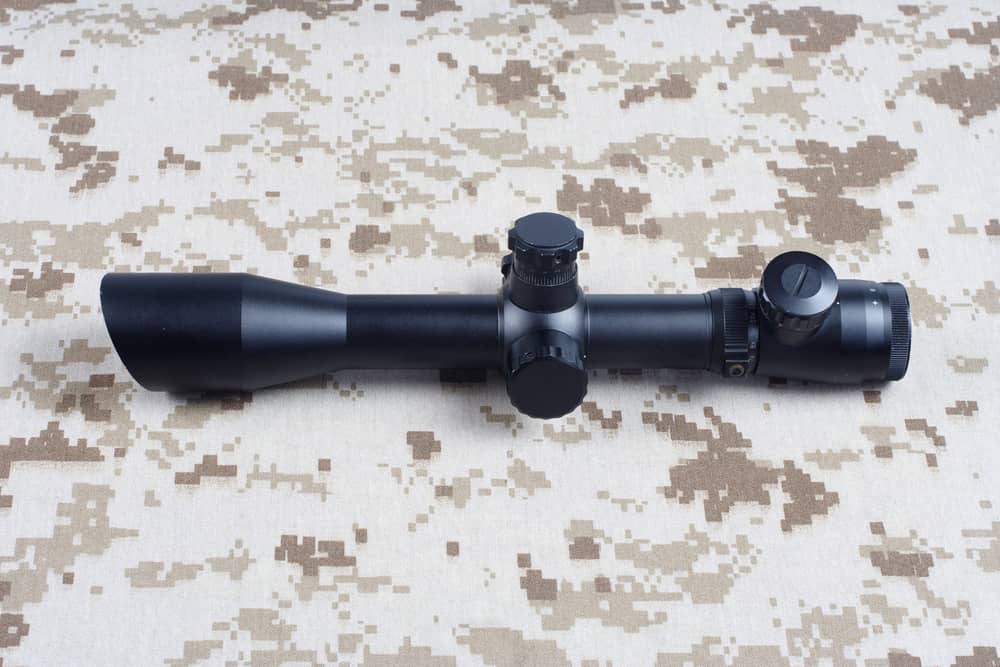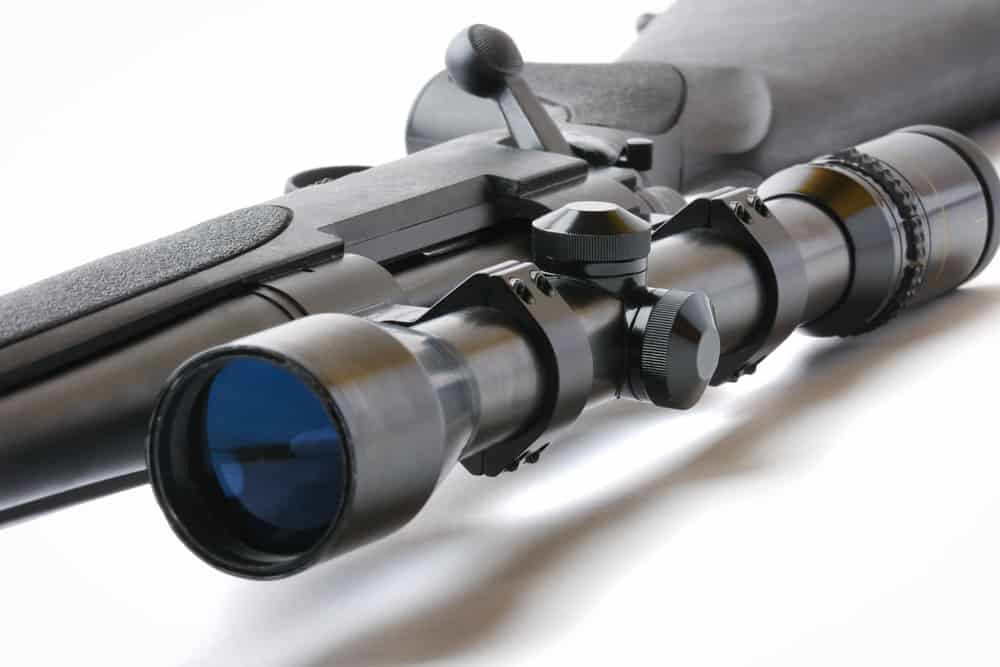Nothing is more frustrating than to be out in the field on your long-anticipated hunt and have your rifle scope fog up. Moisture inside your rifle scope is a major issue. Many shooters and hunters wonder how do you get water out of a rifle scope?
Moisture inside a rifle scope is a sure indication that the seals on the scope are compromised. If the seals are bad and the nitrogen inside the scope has escaped, the only reliable long-term solution is to send the scope back to the manufacturer for an overhaul. There is no way for the average shooter and hunter to remedy the problem.
A rifle scope with failed or damaged seals ultimately leads to one of two solutions. If the scope comes from one of the better-known manufacturers and is still under warranty, a trip back to the factory can often restore the scope to pristine condition. It is often better to replace a less expensive scope rather than spending time and money to repair the scope.
SKIP AHEAD
Understanding How Manufacturers Make Scopes Waterproof and Fogproof
Manufacturers of rifle scopes typically employ a range of techniques to waterproof and Fogproof their rifle scopes. These techniques address a separate issue that can cause water infiltration and lens fogging in a rifle scope. Knowing the problem makes understanding the solution of waterproofing and fog proofing a rifle scope easier.
Water Infiltration – Seal it Tightly
Keeping water, and water vapor, out of a scope is the key to preventing lens fogging and water damage inside the scope from corrosion. Most rifle scope manufacturers utilize O-rings and precision machining to prevent water infiltration.
The closer the tolerances of machining the various parts of the scope, including the tube, the bell, and any related parts, is key to keeping things dry inside the scope. These tight tolerances mean tighter joints between the pieces preventing water infiltration through the threads or other connecting pieces.
When Things Need to Move
Using tight tolerances on parts with fine threads is good when the parts don’t need to move. However, more elaborate scopes with adjustable magnification, diopter adjustments, windage and elevation turrets and parallax correction must all move in some fashion when in use.
Most scope manufacturers address these challenges with 0-rings that seal tightly against the moving parts and keep moisture and dust from entering the scope. These O-rings are typically synthetic rubber or silicon. O-rings are dependable and can exhibit long durability. These small soft parts can wear and age, leading to failure.
Keeping things Dry – Gas-Filled Optics
Keeping moisture out is one challenge. Dealing with the naturally occurring humidity in the air is another. If moisture-laden air remains in the scope during manufacture, the moisture inside the scope will condense on the scope lenses when the scope moves from warm to cold environments.
Manufacturers prevent this condensation by removing all the air inside the scope body and replacing it with dry nitrogen or argon gas. The seals and O-rings on your scope not only prevent moisture from entering the scope, but the seals also keep the dry gases inside the scope.
What Happens When the Scope is Damaged or the Seals Fail?
When one of the seals or O-rings fails, the nitrogen or argon gas tends to escape. Each time the scope is warmed or cooled, the pressure difference generated in the scope pushes the dry gas out or pulls the moisture-laden air into the scope. Eventually, enough moisture will accumulate in the riflescope to cause condensation and fogging.
Can’t I Open the Scope and Dry it Out?
If you have the right tools and understand how to disassemble and reassemble the internal arts of your scope, you can. Most shooters and even gunsmiths don’t have the tools or the know-how to accomplish this task.
If you do try and open your scope, do so carefully and slowly. Lay the unassembled parts in order so that you have some idea of how the parts go back together. Putting the parts back into the tube in the right order is critical for the scope to function properly.
You must make sure that the interior parts of the scope are completely dry and do not have any corrosion. Some people advocate putting the parts in a warm oven to ensure that they are dry. Others opt for placing the scope parts in a plastic bag with a desiccant pack like those used to keep electronics dry during shipping.
In any case, there is no easy way to purge your scope and fill it with nitrogen or argon during reassembly. You may not be able to find the correct size O-rings and special seals used around the lenses. Suffice it to say that you will never achieve the level of waterproofing and fog proofing provided by the factory.
The Alternatives
When your scope consistently fogs inside, the only two real alternatives are returning the scope for remanufacturing or replacing the scope altogether. If your scope is one of the better brand names, your warranty may cover the rebuild.
Several scope manufacturers offer lifetime no-questions-asked warranty service on their scopes. A solid warranty is one exceptionally good reason to spend a bit more on a scope in the first place.
Some scope manufacturers will rebuild older scopes or scopes out of warranty for a fee. Be careful with this option. Often you can get a newer and better scope for the cost of rebuilding your old scope.
If all else fails, you have the option to replace the defective scope. Replacement isn’t the most popular option for many shooters, but the reality is that it may be the most cost-effective.
How do I Use the Warranty on My Rifle Scope?
That can be a confusing and difficult question. Each manufacturer dictates the requirements and processes for exercising a warranty claim. You should consult the user’s manual that came with your scope or visit the manufacturer’s website to learn more about placing a warranty claim on your damaged scope.
In general, these are the general limitations of the major manufacturer’s warranties.
- Leupold – Leupold advertises a lifetime warranty on their rifle scopes. However, there are some limitations and exclusions to this warranty. In general, Leupold warranties that their scopes and other aiming devices will perform up to the specifications Leupold advertises. However, Leupold may not honor your warranty claim if they believe that your scope has been modified, misused, damaged by accident, abuse, or misapplication.
- Vortex Optics – Vortex Optics calls their warranty the VIP Guarantee. Vortex Optics promises to repair or replace your rifle scope at no charge, no matter what the reason for the damage or failure. Vortex Optics advertises its warranty as a no-fault guarantee.
- Bushnell – Bushnell advertises a Lifetime warranty as well. However, closer examination of the Bushnell documentation reveals that Bushnell defines the lifetime of their riflescopes as thirty years. The warranty also excludes some specific claims, such as
- cosmetic damage
- damage caused by failing to maintain the product properly
- loss
- Theft
- damage as a result of unauthorized repair
- modification
- disassembly
- intentional damage, misuses, or abuse
- Steiner – Steiner calls their warranty the Heritage warranty. Steiner offers a lifetime warranty on their riflescopes. Steiner’s only things excluded from warranty service are damage caused by intentional misuse, loss, theft, or cosmetic damage that doesn’t interfere with the riflescope’s operation. Steiner does not require registration, proof of purchase or other documentation to make a warranty claim.
- Trijicon – Trijicon covers its optical products for the lifetime of the original owner. The Trijicon warranty covers materials and workmanship but excludes abnormal, abusive, or improper use, including any damage or failure resulting from an accident or improper service.
For most shooters, the small differences apparent in the operation of most better quality scopes are so small as to be almost undetectable. In these cases, deciding which scope to purchase often boils down to who offers the best warranty and the best customer service.
How Long Should I Expect a Good Rifle Scope to Last?
The life expectancy of a rifle scope depends on several factors. The most telling factor is the quality of the manufacturing and design. It may sound trite, but the more you spend on a scope, the better you should expect it to perform and the longer it should last.
The better riflescopes on the market may well last past your lifetime and provide excellent performance will into the future. If the scope is properly cared for, the life span of a high-quality scope is virtually unlimited. The statistics will likely catch up, and an accident will happen before the scope itself wears out.
Our Recommendations
If your rifle scope begins to exhibit problems with fogging or moisture inside the scope, the first stop should be the manufacturer of the scope. Your best bet to rectify the problem is to have the scope professionally serviced by the manufacturer. Hopefully, one of the better warranties covers your scope.
If the manufacturer’s warranty no longer covers your scope, it may make economic sense to pay for refurbishment. Most manufacturers can accomplish this repair at a reasonable price. Consulting with the scope manufacturer’s customer service will give you the best answer to this question.
If a valid warranty doesn’t cover your scope and the scope was not an expensive make or model, our recommendation is to replace the scope with a better option. Rather than spend time and money to repair a compromised inexpensive scope, put that money into purchasing a better scope that will last for a lifetime.
Can you Repair a Water Damaged Scope?
In general, the answer is no. The tools and techniques for returning even a cheap rifle scope to a reliable condition are almost impossible outside the manufacturer’s facilities. There are plenty of opinions and ideas on the internet for repairing water-infiltrated scopes. Most will work temporarily, but, in the end, the scope won’t perform up to specification, and you will be disappointed.




